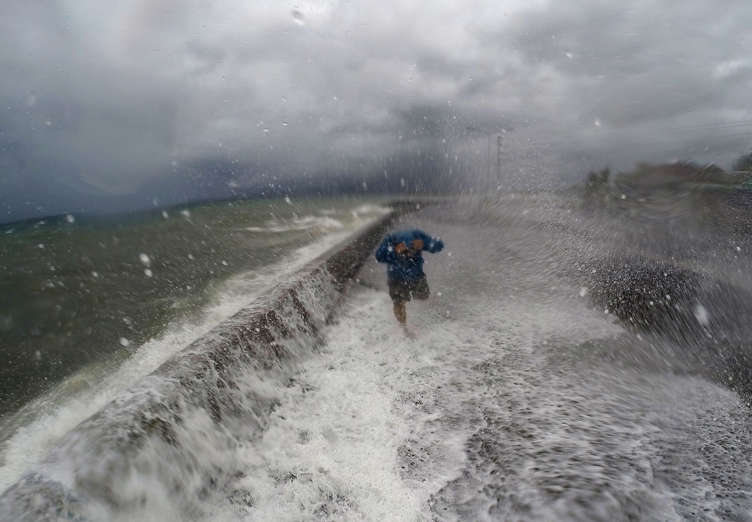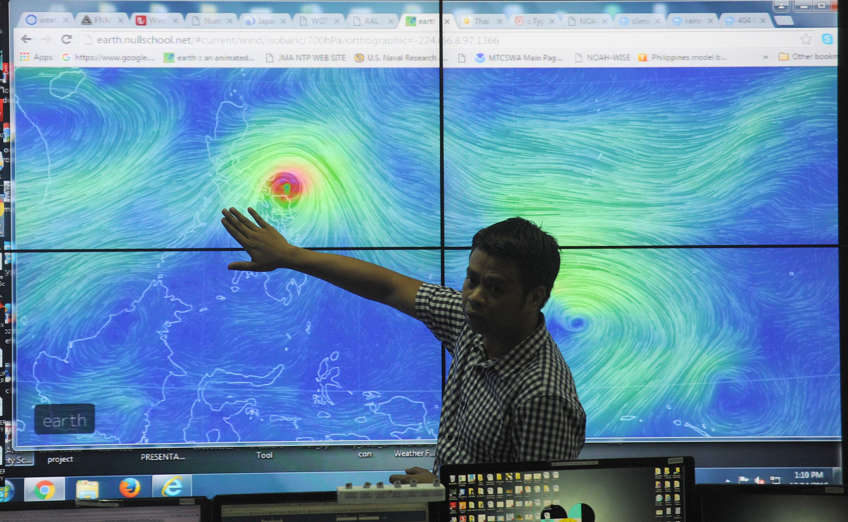msn

A resident walks past big waves spilling over a wall onto a coastal road in the city of Legaspi in Albay province, south of Manila, on Dec. 14.
More than 700,000 people in the central Philippines fled to safer areas for fear of giant waves, floods or landslides as Typhoon Melor slammed into the archipelago nation Monday, officials said.

Meteorologists from the Philippine Atmospheric Geophysical and Astronomical Services Administration (PAGASA) monitor and plot the direction of powerful Typhoon Melor at their headquarters in suburban Manila on Dec. 14.
Melor crossed the central Burias Island late Monday, with authorities warning that traditional thatched homes were unlikely to withstand the strong winds and that crops may suffer heavy losses. There were no immediate reports of casualties or damage.
The typhoon brushed the northern tip of Samar, a farming island of 1.5 million people, early Monday with winds gusting up to 185 kilometres (115 miles) per hour, the state weather bureau said.
Samar was among areas devastated in 2013 by Typhoon Haiyan, when giant waves wiped out entire communities and left 7,350 people dead or missing.
Authorities warned that Melor's powerful winds might whip up four-metre-high (13-feet) waves, blow off tin roofs and uproot trees. They said heavy rain within its 300-kilometre diameter could trigger floods and landslides.
Read More Here

No comments:
Post a Comment
Hello and thank you for visiting my blog. Please share your thoughts and leave a comment :)